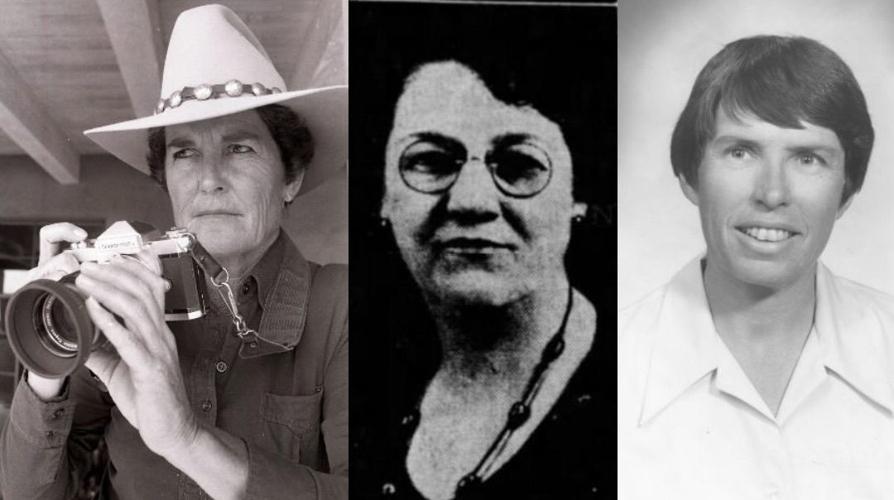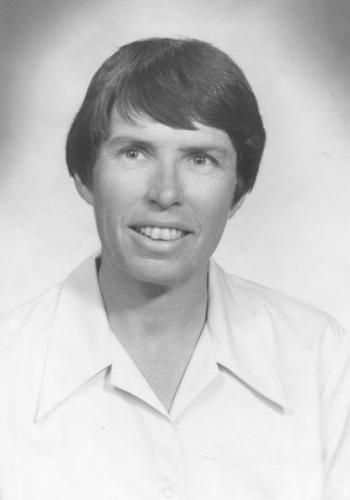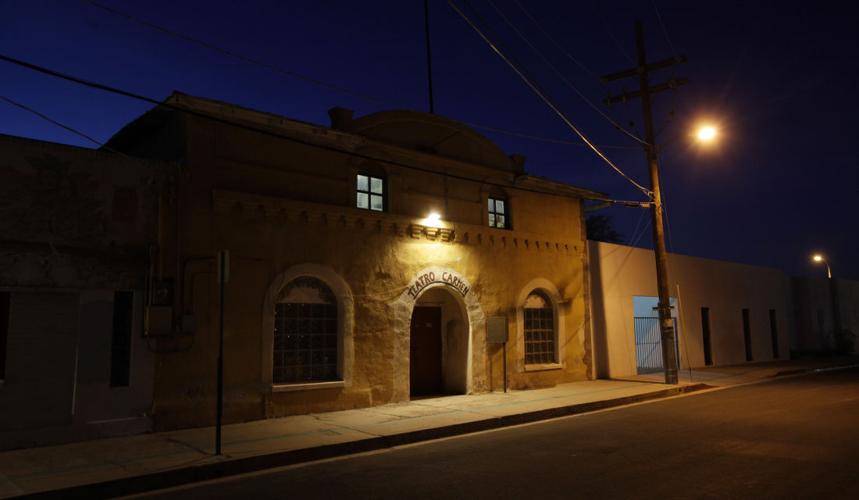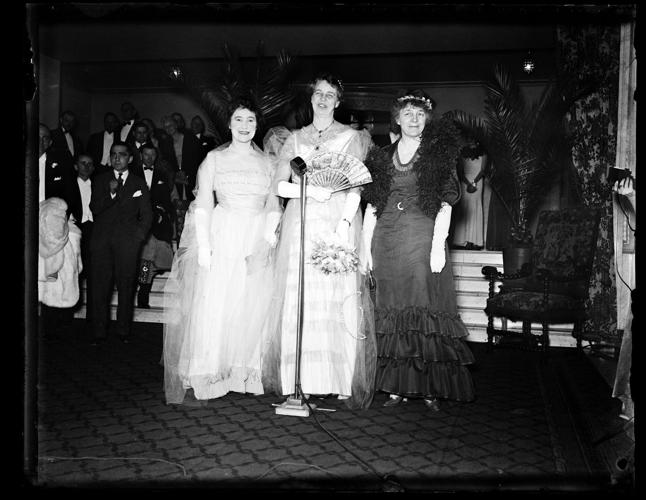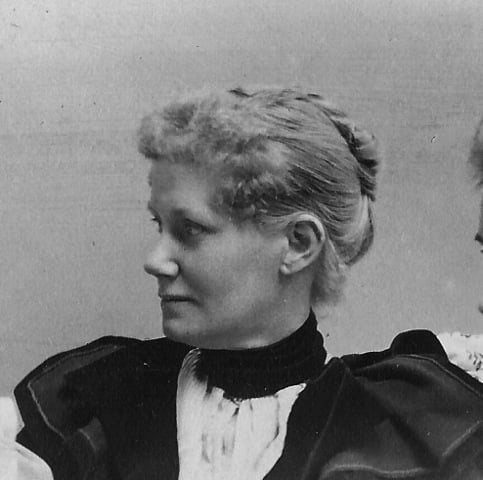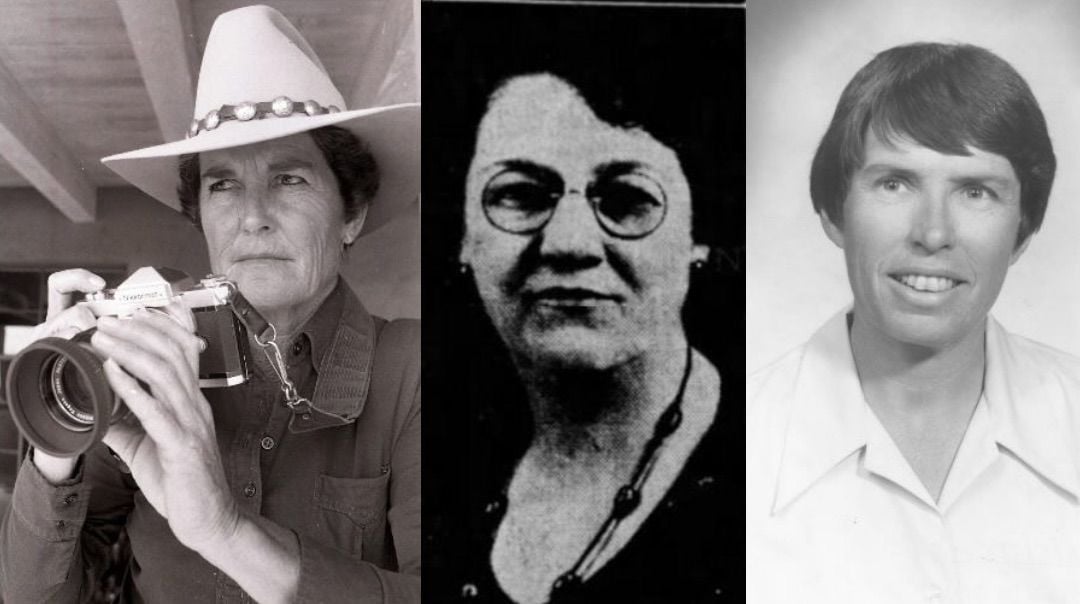March is the month when we celebrate the women who have gone before — those who stood up, spoke out and made history.
March is Women's History Month, and Tucson's past has no shortage of sheroes.
You may not have heard these women's stories in your history class (we're looking at YOU Father Kino.) But we are trying to remedy that this month with weekly reminders of Tucson's ladies of yore.
This week is the hall of fame edition, because on Thursday, March 23, three Tucson women will join the ranks of those inducted as Legacies into the Arizona Women's Hall of Fame.
(That's today from 3 to 5 p.m. at the Arizona Heritage Center, 1300 N. College Ave., in Tempe).
So in their honor, we'll tell you about these women and several other past inductees.
We'll start with our new inductees from Tucson.
Sister Clare Dunn

Sister Clare Dunn.
1934-1981
Sister Clare Dunn's four terms as a Democrat serving in Arizona's House of Representatives made her the only nun to serve in the state legislature and the first in the nation to hold a public office.
Dunn, along with her aid Sister Judith Lovchik, advocated for those in need of a voice. She also took up causes important to women.
"She tried to use the system to help those she felt were getting a raw deal, the poor, the minorities, the downtrodden. She worked her tail off for them," Rep. Jim Skelly, R-Scottsdale, told the Star in 1981 following Dunn's death in July of that year.
Both Dunn and Lovchick, Sisters of St. Joseph of Carondelet, were killed in Marana in 1981 on Interstate 10 driving southbound when a car headed in the opposite direction collided head-on with them in their lane.
Both women were 46.
Dun joined the Sisters of St. Joseph of Carondelet in 1955 and held a master's in history from Mount St. Mary's College (now Mount St. Mary's University) in Los Angeles.
During her lifetime in Tucson, she:
• Taught history and government at Salpointe High School before running for office in 1974.
• During her campaign she championed legislative reform, passing the equal rights Amendment and a number of social issues.
• Represented Tucson's District 13, which at that time was a midtown-northeast Tucson combo.
• During her service as a State House representative from 1975 to 1981, developed a reputation for being genuine and kind, even to her political opponents.
Sources: "For State House, Dist. 13" in the Arizona Daily Star (1976); "Rep. Clare Dunn dies in I-10 crash" in the Arizona Daily Star (1981); "Diverse politicians mourn loss of legislator 'who had no enemies" in the Arizona Daily Star (1981); "Rep. Clare Dunn seeking re-election in Dist. 13" in the Tucson Daily Citizen (1976); Arizona Women's Hall of Fame.
Dr. Clara M. Schell
1872-1955

Dr. Clara M. Schell.
Dr. Clara M. Schell's name comes up again and again in old copies of the Arizona Daily Star.
Schell was not only Arizona Territory's first woman optometrist, but she also made her mark on a number of local organizations, including the county humane society and the Business and Professional Woman's Club.
She used her influence to advocate for women's suffrage and children's needs and other causes near to her heart.
She helped to establish the Arizona Children's Home and Tucson's YWCA.
Schell was awarded one of the first lifetime memberships given by the Arizona State Association of Optometrists. 👓👓
During her lifetime in Tucson, she:
• Studied optometry in Chicago with her husband after their 1892 marriage.
• Moved to Tucson and was granted with her husband, Henry A. Schell, optometry licenses No. 1 an No. 2 by the Territory of Arizona.
• Led the Woman's Business Club as president and traveled to Phoenix to petition the legislature on behalf of the women in the club.
• Retired from optometry in 1946, according to a Star announcement.
Sources: "Clara Schell, 82, dies in Tucson" in the Arizona Daily Star (1955); "Dr. Clara M. Schell reports her work on new wage bill" in the Arizona Daily Star (1923); "Dr. Clara M. Schell elected 1923-24 president of Business Woman's Club" in the Arizona Daily Star (1923); "Dr. Clara Schell to Spend Summer in California," Arizona Daily Star (1948); Arizona Women's Hall of Fame.
Louise Serpa
1925-2012

Louise Serpa made a name for herself photographing rodeos and horse shows.
Louise Serpa keeps company with Annie Oakley, Laura Ingalls Wilder and Georgia O'Keeffe in the National Cowgirl Hall of Fame in Texas.
She's Tucson's rodeo photographer extraordinaire, the first woman given permission to shoot photos inside a professional rodeo ring. 📸🐎
But she never did it to prove anything as a woman. She did it because she needed money, had a job and wanted to do it well.
Serpa often told interviewers she was born in the wrong place at the wrong time — into New York society in 1925.
She could sing, and so she performed in USO shows and graduated from Vassar College. Her first marriage in that world did not last, and life took her West. Divorced, she married again and settled on a sheep ranch in Oregon. That, too, ended.
So she trekked to Tucson, two daughters in tow. And here is where she discovered her lifelong passion: Rodeo.
During her lifetime in Tucson, she:
• Started photographing junior rodeos with drugstore camera and selling her prints to parents for 75 cents.
• Got close to bucking animals to get the shot — in the early days, she couldn't afford a long lens.
• Traveled throughout the Southwest, following the rodeos.
• Survived a goring by a bull that broke her sternum and ribs.
• Shot England's Grand National Steeplechase and the Dublin Horse Show in 1970 and the Sydney Royal Easter Show in 1975, and was mostly likely the first woman allowed to take photos on the grounds of these events.
• Received the National Cowboy and Western Heritage Museum's Tad Lucas Award and an honor from the Pima County Sports Hall of Fame.
• Photographed every Tucson rodeo between 1963 and 2011.
• Continued to shoot rodeos despite a cancer diagnosis.
Sources: "Pioneer rodeo photographer honored" in the Arizona Daily Star (1999); "Eastern doffed her glove to become top rodeo photographer" in the Arizona Daily Star (1996); "Picturing the cowboy life" in the Arizona Daily Star (2005); "Photographer's advice on rodeos, life: 'Never don't pay attention'" by Jan Cleere for the Arizona Daily Star (2015).
Here are a few more ladies to know who have been inducted into the Arizona Women's Hall of Fame in years past. (Note that some of the other women we've been telling you about in past stories are also inductees).
Carmen Soto de Vasquez
1861-1934

El Teatro Carmen, a Spanish-language theater in Barrio Viejo, was founded by Carmen Soto de Vasquez and once attracted famed performers.
Carmen Soto de Vasquez made Tucson the place to be for Spanish-language theater.
When her theater El Teatro Carmen debuted May 20, 1915, it attracted performers from Mexico and Spain to Tucson.
The plays, musicals and operas that took up residence in the Sonoran-mission-style theater infused this wild western town with some culture.
If you were headed to a performance at El Teatro Carmen, you dressed to impress.
The adobe theater could seat as many as 1,400 patrons of the arts.
After nine years of running the theater, the family moved to Nogales. The building still stands and went through several incarnations, first hosting movies and boxing matches and eventually becoming a garage. You can still find it at 348 S. Meyer St.
During her lifetime in Tucson, she:
• Supported a Nogales orphanage and adopted at least three children.
• Brought Spanish-language arts to Tucson with the opening of El Teatro Carmen.
• Invited well-known Spanish and Mexican performers to come to Tucson and develop a following outside of their country and among Tucson's Hispanic population.
• Sold the theater in 1926.
• Was inducted into the Arizona Women's Hall of Fame in 1984.
Sources: Arizona Women's Hall of Fame; "Western Women: Carmen Soto's theater was cultural center" by Jan Cleere for the Arizona Daily Star (2015).
Isabella Greenway King
1886-1953
Eleanor Roosevelt's bff Isabella Greenway opened the Arizona Inn and became Arizona's first congresswoman.

From left, Mary Harriman Rumsey, New York millionaire, first lady Eleanor Roosevelt and Rep. Isabella Greenway of Arizona, in Washington, D.C., 1934.
Isabella moved to Ajo, Arizona in 1922 after the death of her first husband and marriage to her second husband, both war veterans.
She moved her family to Tucson following the death of her second husband. And after his death, she found solace in visiting war veterans in Tucson hospitals where they made crafty wooden items. The Arizona Hut was born when she realized she could get the veterans to make furniture that would sell throughout the country.
The elegant Arizona Inn followed filled with furniture from The Arizona Hut, where most of the visitors were wealthy and famous.
She was even active in Franklin D. Roosevelt's election and became Arizona's first congresswoman, constantly fighting for Arizona.
"It was no easy task for me to make up my mind to toss my sombrero (or shall I say bonnet?) into the coming congressional race," she said about deciding to run.
That's not even the best part. She did it all while raising a child on her own.
During her life in Tucson, she:
• Became Arizona's first congresswoman for two terms.
• Opened The Arizona Hut, a furniture shop meant to help disabled World War I veterans keep their jobs.
• Opened the Arizona Inn with furniture made at The Arizona Hut.
• Was bffs with Eleanor Roosevelt.
• Was inducted into the Arizona Women's Hall of Fame in 1981.
• Is honored in Women's Plaza of Honor at the University of Arizona.
Sources: Arizona Women's Hall of Fame; "Western Women: Isabella Greenway was first Arizona congresswoman" by Jan Cleere for the Arizona Daily Star (2016); Arizona Inn's History Book; "Isabella Greenway: An Enterprising Woman" by Kristie Miller.
Sarah Herring Sorin
1861-1914
Besides being the first woman lawyer in Arizona, she impressed the country by being the first woman to argue her case by herself (without a man) in front of the U.S. Supreme Court.
Even better, she won the case.

Sarah Inslee Herring Sorin ran one of the first female law practices in the Arizona territory.
"Mrs. Sorin also disproved that women and logic are strangers, or at least she proved that she and logic are intimate acquaintances," according to an Arizona Daily Star article published in 1913.
Sarah studied law under her father before attending law school in New York City. She practiced law in Tombstone, Tucson, and Globe, where she was highly respected.
During her lifetime, she:
• Became the first woman teacher in Tombstone before starting her law career.
• Became the first woman lawyer in Arizona.
• And the first woman lawyer to argue a case before the U.S. Supreme Court without a man at her side in 1913.
• Was inducted into the Arizona Women's Hall of Fame in 1985.
• Is honored in Women's Plaza of Honor at the University of Arizona.
Sources: Arizona Women's Hall of Fame; "Tucson lawyer in U.S. Supreme Court" by the Arizona Daily Star (1913).


